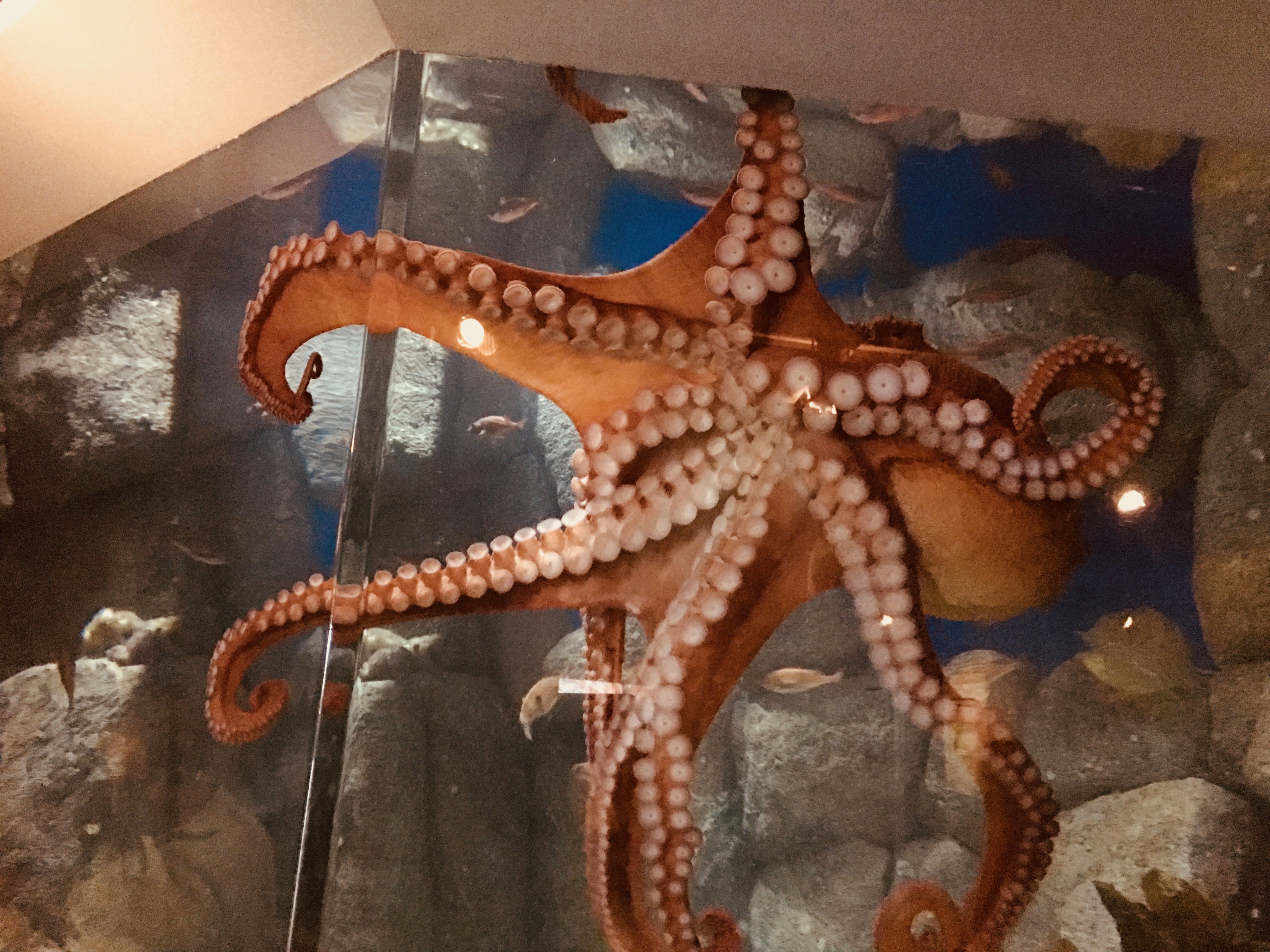

The Giant Pacific Octopus is also quite long, measuring in length from 9.75 feet ( 3 meters) up to 16 feet (4.9 meters).Īccording to National Geographic, the largest known Giant Pacific Octopus specimen weighed more than 600 pounds (272.15 kilograms) and was 30 feet (9 meters)! In addition to being the biggest, the Giant Pacific Octopus also lives longer than any other known octopus species (they only live between 3 – 5 years, which is considered long because most octopus die shortly after breeding). On average, the Giant Pacific Octopus weighs between 22 – 100 pounds (10 – 50 kilograms). Since the Seven-Arm Octopus is relatively unknown, the Giant Pacific Octopus is widely considered to the be the world’s largest octopus species. [ Average Weight: 22 – 110 lbs largest specimen was 600 lbsĪverage Length: 9.75 – 16 ft largest specimen was 30 ft They also believe that people have been unknowingly catching Frilled Giant Pacific Octopuses for years. Scientists have suspected that there was a separate species of Giant Pacific Octopus since at least 2012. The Frilled Giant Pacific Octopus also has two white spots on its head, while the common Giant Pacific Octopus only has one.
#Giant octopus skin
The most distinguishing characteristic of the Frilled Giant Pacific Octopus is its frill of merged papillae – raised fleshy bumps on its skin – running down the length of its body. The Frilled Giant Pacific Octopus is both physically and genetically different from the common Giant Pacific Octopus is small ways.

The scientists have dubbed the new species the Frilled Giant Pacific Octopus, which they say is a sister-species to the more common Giant Pacific Octopus. In late 2017/early 2018, it was reported that scientist had discovered a new species of Giant Pacific Octopus hiding in plain sight. Because the females spend so much time watching over their eggs, scientists often have difficulty tracking the giant Pacific Octopus to gather data about population numbers.[ Average Weight: Unspecified – 22 – 110 lbsĪverage Length: Unspecified – 9.75 – 16 ftĭistribution: Prince William Sound in Alaska, USA She doesn't even venture out to hunt prey.
#Giant octopus full
Before they die, mother giant Pacific octopuses stay with their eggs for around seven months to watch over them full time. These massive octopuses have anywhere from 2,140 to 2,240 suction cups on their vast arms, which provides them with an extreme sense of smell and taste, as well as an exceedingly powerful grip.įemale Giant Pacific Octopuses will lay more than 74,000 eggs in their lifetime, though they will die very shortly after they breed. They've even been seen eating birds when they get the chance. This massive octopus will even eat other octopuses and small sharks like the spiny dogfish. For generations, tall tales have been passed down about these massive beasts. They are the largest known species of octopus, and they play an important part in the world’s ecosystem. You can find the Giant Pacific Octopus eating lobsters, fish, scallops, snails, abalone, crabs, shrimp, and clams. The Giant Pacific Octopus is one of the most elusive of all marine animals, reaching lengths of up to 16 feet and weighing in excess of 100 pounds. In terms of diet, this largest known species is not picky. That's actually considered old for an octopus, as the giant Pacific Octopus is one of the longest living octopus species in the ocean. On average, the wild Giant Pacific Octopus only lives to be around 4-5 years old. These special pigment cells allow them to blend in with the surrounding coral in their environment. This particular Octopus has special pigment cells that lie just under its skin's surface, known as chromatophores. However, similar to other octopuses, this species has blue blood due to the copper-rich protein that flows through its bloodstream. Because the Giant Pacific Octopus does not have a protective outer shell like other ocean creatures, it has to use its camouflage abilities to protect itself. Beyond the fact that Giant Pacific Octopuses are the largest octopus species in the ocean, you would be able to easily recognize one thanks to their reddish-pink color.


 0 kommentar(er)
0 kommentar(er)
